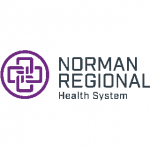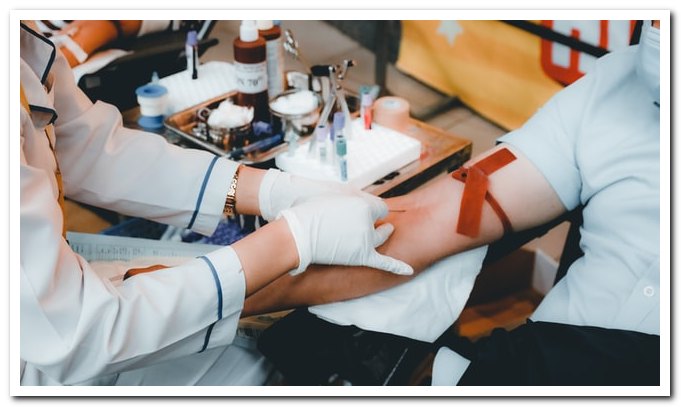-

Chiropractor
Vineyard Complementary MedicineEdgartown, MAEdgartown, MA- Full Time
-

Associate Chiropractor
Walk In ChiropracticSpokane, WASpokane, WA- Full Time
-

Associate Chiropractor
Global Neuro and Spine InstituteJensen Beach, FLJensen Beach, FL- Full Time
-

Associate Chiropractor
Chiropractic Sulphur SpringsSulphur Springs, TXSulphur Springs, TX- Full Time
-

Chiropractor
Capital Sports MedicineSilver Spring, MDSilver Spring, MD- Full Time
-

Chiropractor
San Ysidro HealthChula Vista, CAChula Vista, CA- Full Time
-

Chiropractor
Borinquen Medical CentersMiami, FLMiami, FL- Full Time
-

Associate Chiropractor
Broward Medical and RehabFloridaFlorida- Full Time
-

Chiropractor
Preferred Choice ChiropracticLittle Falls, MNLittle Falls, MN- Full Time
-

Chiropractor – Wellness Clinic
Norman Regional Health SystemsOklahoma City, OKOklahoma City, OK- Full Time
Phlebotomist Jobs

As one of the most in-demand fields for job opportunities in recent times, the healthcare industry is quickly becoming one of the highest labor employers and a massive contributor to the GDPs of nations across the world. One healthcare sector that requires very little education and allows so many to chase their dreams in the healthcare industry is the field of phlebotomist jobs.
Phlebotomy is a branch of medicine that deals with making a puncture in the vein (usually using a needle) and drawing blood from a patient. With over 30,000 new positions expected to open up nationwide by 2026, the area of phlebotomy remains one of the fastest-growing healthcare sectors.
If you have a keen eye for record-keeping, can generate reports for superiors, and lack the money or the educational requirements to attend a medical school, then you might want to consider a phlebotomist career. In the subsequent paragraphs, you will find out more about what it’s like to be a phlebotomist, the qualifications you’ll need, and what will your job prospects be.
Phlebotomist Jobs
What Do Phlebotomists Do?
The phlebotomist’s job is to extract blood samples from patients and move them to the laboratory for testing. In cases where patients develop complications after the blood drawing process, the phlebotomist can also provide medical assistance to those patients.
You can find phlebotomy jobs in private laboratories, clinics, hospitals, and other health centers globally. Irrespective of the work setting, you will often find phlebotomists performing any of these jobs: blood transfusions between donors and patients, blood testing, carrying out blood draws, etc. However, in medicine, phlebotomists are also regarded as phlebotomy technicians.
Phlebotomists Job Duties
Provided below is an extensive list of what is required of you when working jobs in phlebotomy:
- Collecting blood samples from patients through several methods, such as syringes, vacuum tubes, heel or finger sticks, etc.
- Determining the right venipuncture method to be used on a patient based on their age, health condition, etc.
- Centrifuging blood samples.
- Upholding infection control standards when working with patients or equipment.
- Conducting standard laboratory tests.
- Determining the suitability of donors during a blood transfusion process.
- Taking records of patients’ personal and billing information.
- Monitoring both the recipient and donor during and after blood transfusions.
- Most phlebotomist job types also involve carrying out saline flushes through intravenous lines under the supervision of a licensed medical doctor or physician.
- Presenting laboratory results to a physician for further diagnosis.
- Maintaining equipment used for blood or plasma collection and testing.
- Answering questions from patients concerning any of the blood drawing processes.
- Arranging daily clinic or hospital activities related to fluid sample requests based on urgency.
- Ensuring correct labeling, optimal quality, and quantity of samples when sending them for testing.
Types of Phlebotomists Jobs
Limited Phlebotomy Technician (LPT)
Limited phlebotomy technicians (LPTs) are the most basic phlebotomy jobs. To become a limited phlebotomy technician, you need to meet the following requirements:
- 20 hours of certificate classes (without an examination).
- 25 skin punctures in a hospital setting.
- A letter signed by either a medical doctor, a registered nurse, a physician assistant, or a clinical laboratory assistant, confirming your training.
Certified Phlebotomy Technician 1 (CPT1)
The CPT1 certification is the minimum certification demanded by organizations when advertising jobs for phlebotomist positions. To become CPT1 certified, there are 3 options available for different categories of interested aspirants. They include:
- Those having no experience.
- Those having less than 1,040 hours of experience.
- Those having more than 1,040 hours of experience.
For those with no previous work experience, the requirements to become CPT1 certified are as follows:
- 40 hours of training in a hospital setup.
- 20 hours of advanced phlebotomy classes.
- 50 venipunctures and 10 skin punctures.
For those with less than 1,040 hours of work experience, the requirements to become CPT1 certified and ensure a better starting phlebotomist salary are as follows:
- 20 hours of advanced phlebotomy classes.
- 50 venipunctures and 10 skin punctures.
For those with more than 1,040 hours of work experience, the requirements to become CPT1 certified are as follows:
- 50 venipunctures and 10 skin punctures as confirmed by a physician.
Regardless of which category you fall under, after meeting the given requirements, you will need to sit for a written examination before being certified to work CPT1 phlebotomist jobs.
Certified Phlebotomy Technician 2 (CPT2)
The CPT2 certification represents the most advanced certification level for phlebotomists. Phlebotomists who are CPT2 certified generally have better job opportunities and are paid more than their counterparts. To become CPT2 certified, you would need to meet the following requirements:
- 20 hours of advanced classes.
- 20 successful arterial punctures under the supervision of a medical doctor, physician assistant, registered nurse, or clinical lab assistant.
After this, you will need to pass a written phlebotomy exam before you can fully earn your certification.
Work Environment
You can find phlebotomist jobs in almost any healthcare setup today (e.g., clinics, hospitals, private laboratories, etc.). Due to their job nature, phlebotomists may work with children, young adults, the elderly, and even babies. However, depending on your location, you may encounter a specific age group more than others. Also, you may be required to work full- or part-time phlebotomy jobs as requested by your employer.
The bulk of the phlebotomist’s time is spent collecting blood or plasma samples, labeling them before they are taken to the lab, and visiting both examination rooms and the laboratory (to submit or receive samples). To reduce the possibilities of error in most healthcare setups, you will often find one phlebotomist working each shift. Healthcare facilities with extensive setups may have more than one phlebotomist working at a time.
Injuries and Illnesses
As a phlebotomist, you will often find yourself standing for long hours as it is a part of the phlebotomist job requirements. Due to this, people who have worked as phlebotomists for many years often suffer from neck and back pains.
There is also the risk of exposure to deadly diseases that may be contracted from patients. The sharp objects used by phlebotomists to draw blood from patients may cause injuries to a phlebotomist if not carefully handled. When these injuries come in contact with a contaminated patient’s blood, a phlebotomist can become infected with a deadly disease that poses a threat to human life, such as the human immunodeficiency virus (HIV), or hepatitis B and C.
Work Schedule
The work schedule of a phlebotomist depends largely on the location and employer. The description of hospital phlebotomist jobs will differ from that of EMT phlebotomist. Most phlebotomists work full-time. However, those working in hospitals and laboratories may need to work emergency shifts such as nights, weekends, and holidays.
How to Become a Phlebotomist
Phlebotomist career information reveals that to become a phlebotomist, you don’t need to attend a medical school or attain a bachelor’s degree (even though that is a plus). While some may still choose to earn a bachelor’s degree in medical technology in their journey to becoming a phlebotomist, others can enroll in a non-degree phlebotomy program that lasts for about a year or less.
After your education, you will be required to complete a clinical period working as a student phlebotomist to gain the necessary work experience needed for certification. Certification is not compulsory before you can start looking for available phlebotomy jobs.
However, it is becoming increasingly difficult for people without certification to get jobs due to employers’ higher preference for certified phlebotomists (either CPT1 or CPT2). You can find phlebotomy programs in vocational/technical schools, or in community colleges.
Important Qualities
Below are some essential skills needed for different types of phlebotomy jobs:
- Interpersonal skills and empathy for working with patients
- Ability to withstand the stress of standing or moving around for long periods
- Good written, verbal, and communication skills for report writing
- Experience with effective puncture techniques and proof of that experience
- Data entry skills using computers and advanced software
- Attention to detail
- Flexibility to work with almost any type of patient (old, young, children, babies, etc.)
Education
While the job outlook for a phlebotomist is typically good, in order to build a career as a phlebotomist in healthcare, you will need to acquire a minimum education level of a high school diploma. After this, you may choose to enroll in a post-secondary accredited phlebotomy program that usually lasts for a year or less.
Though some organizations offer on-the-job training for phlebotomists, others may require you to have acquired a professional phlebotomy certification before they’ll hire you.
Those who choose to earn a professional phlebotomy certification from a recognized program and qualify for the best phlebotomist job openings will have to complete 200 hours of training and education (including real-life clinical experience) before sitting for the final certification exam (minimum score of 70% required).
Candidates should also have an excellent grasp of medical terminology, human anatomy, and blood drawing procedures. The program will touch on different subjects, including blood sample storage, blood collection, safety precautions, and many more.
Licenses, Certifications, and Registrations
There are no licensing programs designed for phlebotomists. However, certification programs are put in place to educate and enable personnel new to phlebotomist jobs to probe further into their careers. Testing procedures for becoming a certified phlebotomist typically require classroom education, work experience, practical classes, and a final examination before issuing the certification. Five significant organizations control certification programs organized for phlebotomists, and they are:
- National Center for Competency Testing (NCCT)
- National Healthcareer Association (NHA)
- American Society for Clinical Pathology (ASCP)
- National Phlebotomy Association (NPA)
- American Medical Technologists (AMT)
Advancement
There aren’t numerous advancement opportunities open to you as a phlebotomist once you become certified. However, a phlebotomist job can serve as the right platform for you to kick-start your career in other medical-related fields and start training to become a nurse, medical assistant, or even a doctor.
Pay
A phlebotomist job salary depends on numerous factors such as location, employer, education, work experience, and certification. The average annual phlebotomist salary in 2019 was $35,510 per year. While the top 10% earn more than $49,750 annually, the lowest 10% earn less than $26,000.
If you want to know what the average phlebotomist salary was in May 2019 in different healthcare setups, here’s the breakdown:
- Outpatient care centers: $41,620
- Medical and diagnostic laboratories: $37,220
- All other ambulatory healthcare services: $34,460
- Offices of physicians: $34,400
- Hospitals (state, local, and private): $33,720
Job Outlook
Phlebotomist job outlook shows that job opportunities in the field of phlebotomy could rise by 17% between 2019 and 2029, as predicted by the Bureau for Labor Statistics (BLS). The increase in the availability of these jobs is tied to the increasing need for phlebotomy services in hospitals, clinics, blood donor centers, etc.
Almost all arms of medicine require blood analysis for the proper diagnosis of patients. The blood collection process performed by phlebotomists is an essential part of all blood analysis and diagnosis processes. Hence, phlebotomists will continue to be in high demand.
Job Prospects
Phlebotomist career info shows that there is an ample amount of opportunities for these jobs across various medical facilities globally.
As of 2019, phlebotomists accounted for 132,600 jobs, and the largest employers are as follows:
- Hospitals (state, local, and private): 38%
- Medical and diagnostic laboratories: 32%
- All other ambulatory healthcare services: 15%
- Offices of physicians: 7%
- Outpatient care centers: 2%
However, it is essential to note that most healthcare organizations will prefer to hire certified phlebotomists.
FAQ
What is a starting salary for a phlebotomist?
Those just starting in their career as a phlebotomist with the lowest acceptable level of education can expect to receive an annual salary of around $26,000.
What is the average salary of a phlebotomist?
The average annual salary of a phlebotomist is $35,510. However, it is essential to note that this sum may go up or down depending on your qualifications, work experience, and employer. Phlebotomists with CPT2 certification earn the most, followed by those with a CPT1 certification, and finally, those with an LPT certification.
What are other jobs exactly like a phlebotomist?
A few other career paths related to phlebotomy include:
- Medical technologist or medical lab technician
- Patient care technician
- Histotechnologist and histotechnician
- Dialysis technician: hemodialysis
- Intravenous technician
- Pathologist assistant
- Medical assistant
- Cytotechnologist
What does a phlebotomist career entail?
Working as a phlebotomist entails a career dedicated to helping both patients and doctors discover the best course of treatment available to a patient following examination. As a phlebotomist, you will be required to draw blood from patients when they come in for examination. The collected blood sample is then sent to the laboratory for diagnostic testing.
What is the job outlook for phlebotomists?
These jobs are in high demand globally due to the importance of their duties in almost any healthcare setup. According to the BLS, job opportunities for phlebotomists could rise by 17% between 2019 and 2029.
Conclusion
It is clear that becoming a phlebotomist is relatively less rigorous when compared to other healthcare fields like medicine and nursing. With less than a year of education, you can work phlebotomist jobs while you pursue certification from accredited organizations.
Moreover, being a phlebotomist also serves as a stepping stone for some to pursue a career in other medical fields such as nursing.